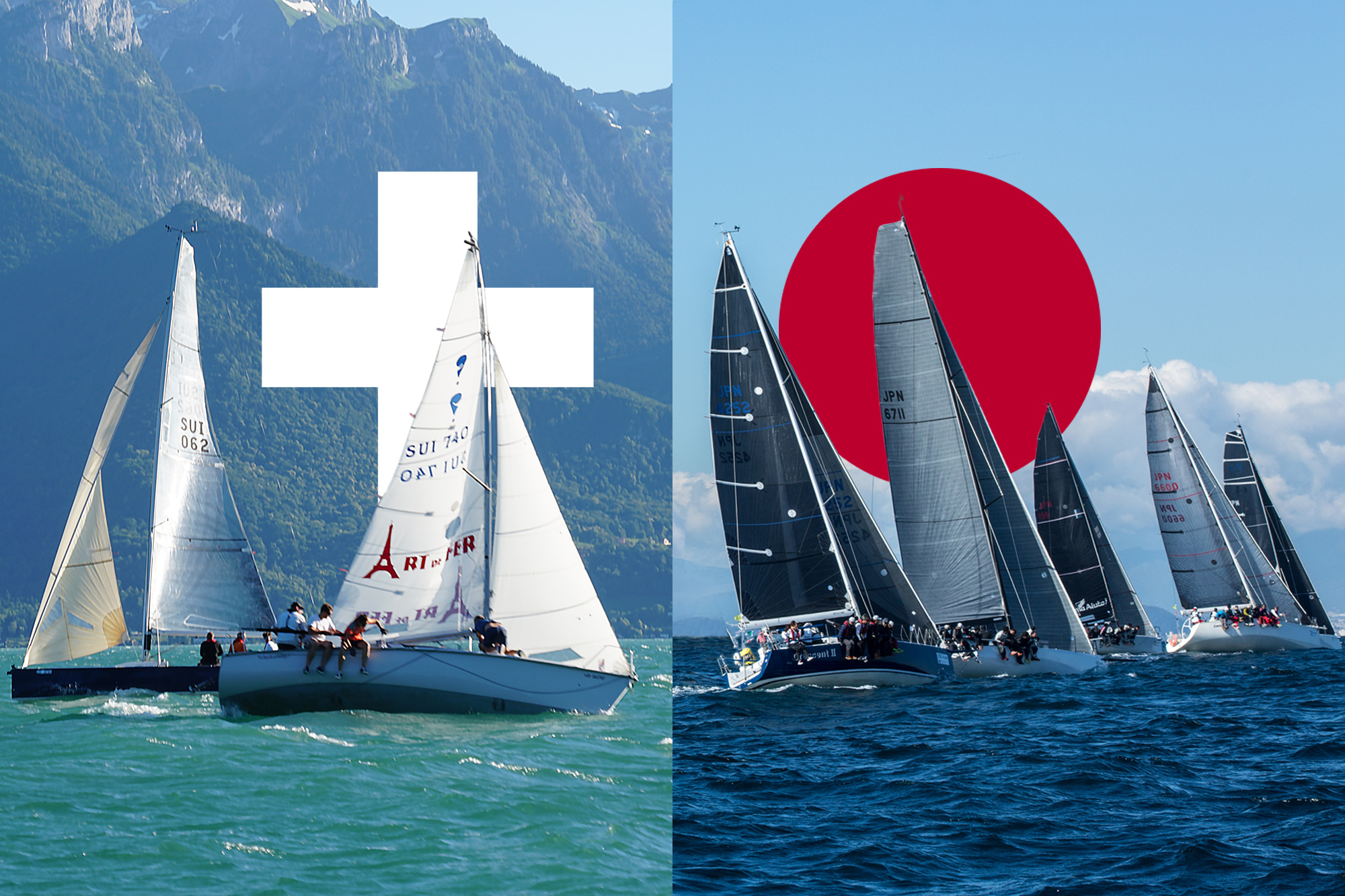-
 (L: ©MGB / R: ©Fujikyuko/Sagami-san)
(L: ©MGB / R: ©Fujikyuko/Sagami-san)
-
 (©MGB)
(©MGB)
-
 (©Fujikyuko)
(©Fujikyuko)
Fujikyuko Railway ― Matterhorn Gotthard Bahn (1991)
Chubu | Yamanashi Prefecture - Minamitsuru District
Train & Transportation
Switzerland and Japan’s most iconic mountains both have had railways for over a hundred years. And their collaboration since 1991 might well be the key to their ongoing success in the 21st century!
The ride to the Five Lakes
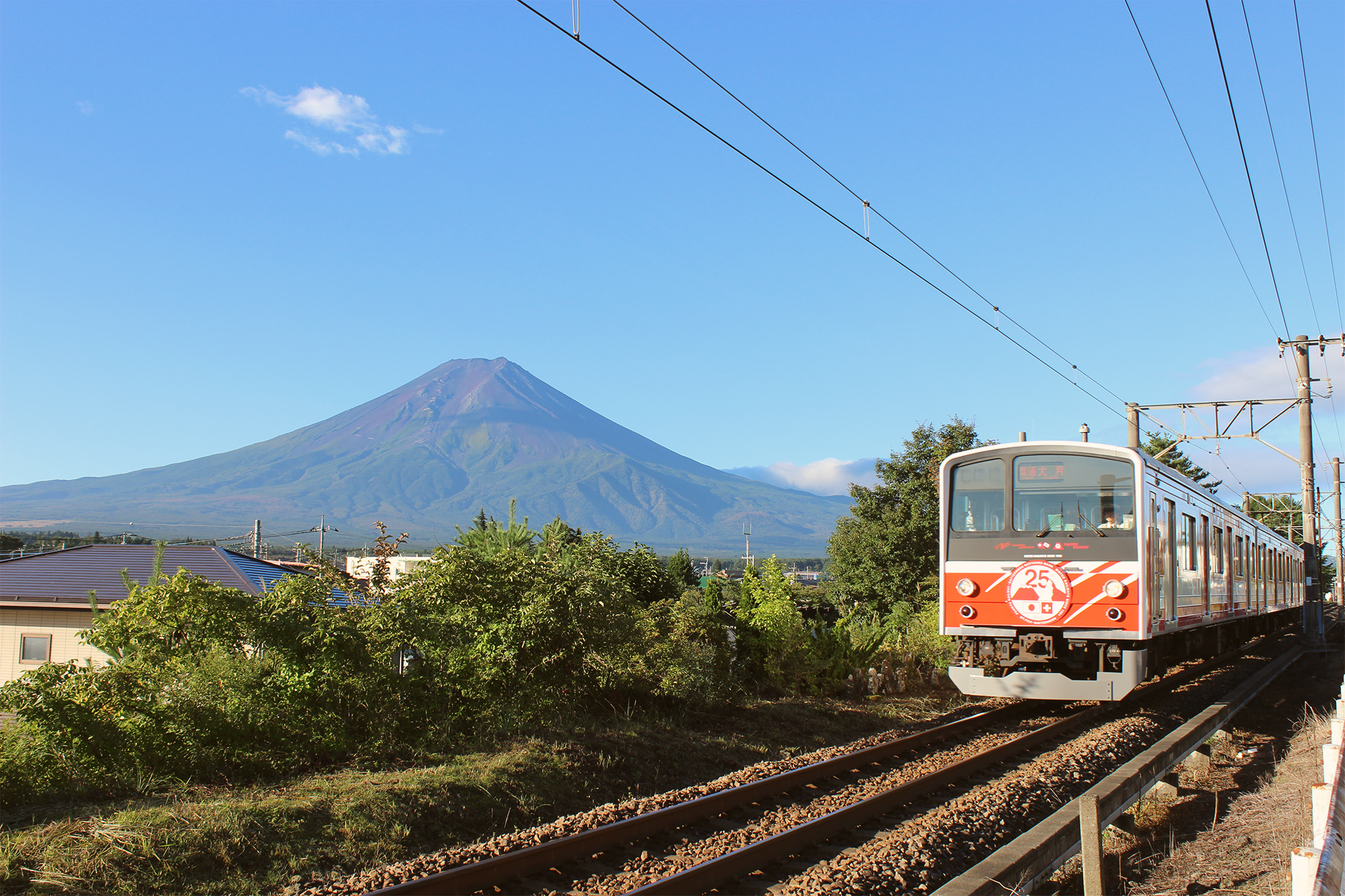
(©Fujikyuko)
While in Yamanashi Prefecture, one can take his/her car and drive from Otsuki (358 m.) to Fujikawaguchiko (857 m.) for about 40 minutes to reach the foot of the mighty Mount Fuji. A wiser alternative, however, is to ride the Fujikyuko Line, which for the same amount of time offers its passengers a comfortable 26.6 km ride… with a panoramic 180° view and a maximum gradient of 40 per mill (2.29 degrees - quite steep for a rail)! From March 2019, a limited express named Fuji Excursion will also connect Shinjuku and Kawaguchiko Stations twice a day, andeven three times a day on Saturdays and national holidays, thus improving the access to Mt. Fuji and the Fuji Five Lakes area. Not bad for a local private railway!
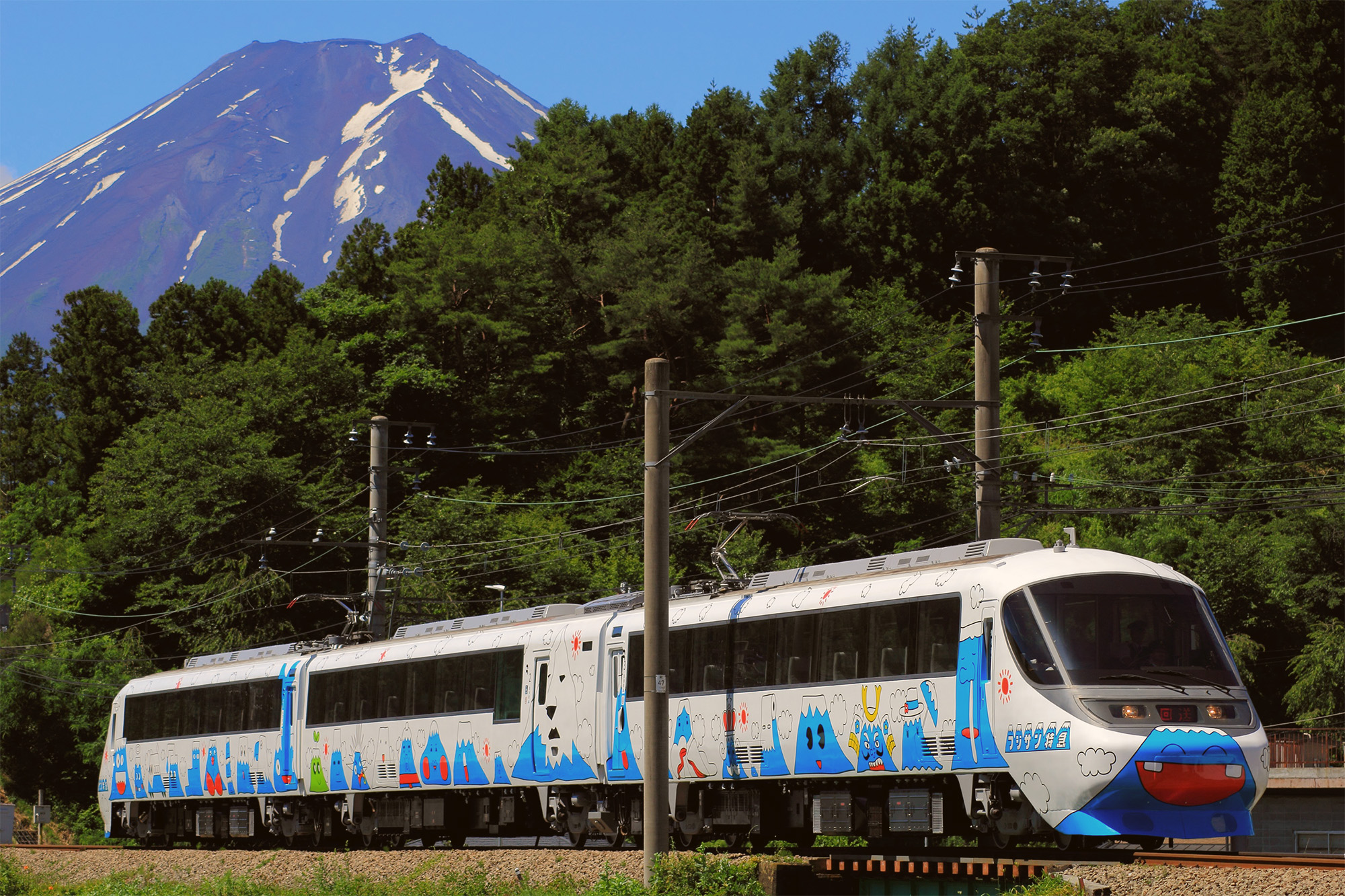
(©Fujikyuko)
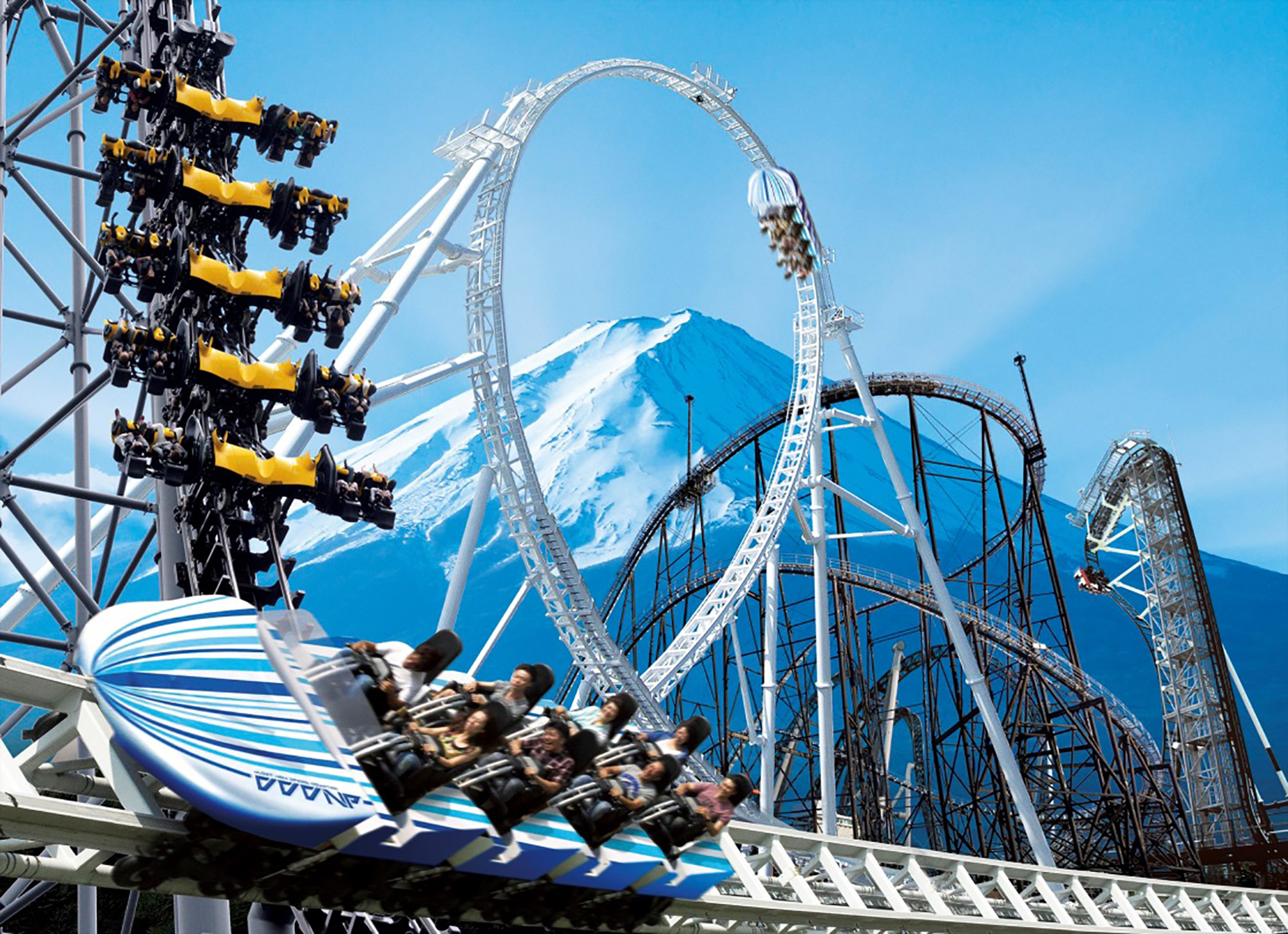
The Fujikyuko Group also runs Fuji-Q, an amusement park near Mount Fuji (©Fujikyuko)
Inaugurated on June 19, 1929, on the remains of the early 20th-century Tsuru Horse-drawn Tramway, the Fujikyuko Railway became instrumental in the development of the region for several decades. Operated by an eponymous company founded in 1926 that also runs buses and an amusement park, the electric line however lost some of its passengers and its freight services in the late 1970s. Nowadays, having mostly reconverted into sightseeing attractions, the Fujikyuko trains are mainly entrusted with the exciting mission of bringing tourists and locals closer to Japan’s most iconic mountain. But in that case, why is there also another mountain on the signs plastered on the lead vehicle?

(©Fujikyuko)
When Fuji meets Matterhorn
In 1991, railways enthusiasts in Japan and Switzerland celebrated two important anniversaries in their respective countries: in Yamanashi, the 65th anniversary of the inauguration of the Fujikyuko line; in the Swiss canton of Valais, the centennial of the legendary Brig-Visp-Zermatt-Bahn (BVZ). Soon, the two companies focused their attention on each other, and noticed that they shared many similarities: an alpine environment, attractiveness to international tourists, a proximity to a world-famous mountain, and even corporate values. A sister railway partnership therefore appeared like the next logical move, and marked the beginning of countless professional and personal exchanges.

1991: Signing of the twinning agreement in Japan (©Fujikyuko)
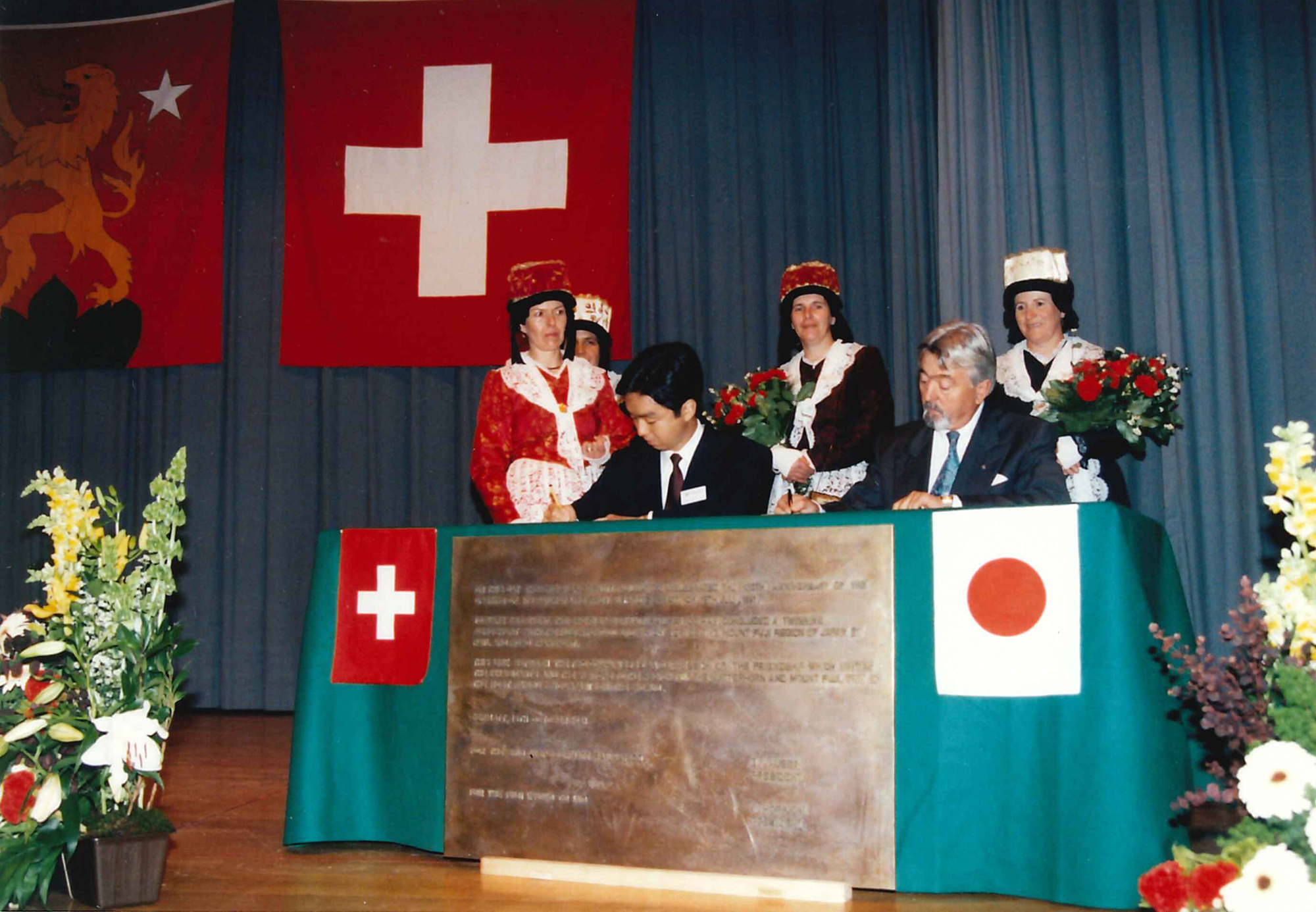
1991: Signing of the twinning agreement in Zermatt (©Fujikyuko)
Before and following the merger of the BVZ into the Matterhorn Gotthard Bahn (MGB) in 2003, the Japanese company has thus dispatched numerous employees to Switzerland to learn about infrastructure, maintenance, energy, marketing and environmental issues. In fact, relations have developed to such an extent that they even led to a sister city partnership between Zermatt and Fujikawaguchiko Town in 2015!

One of Fujikyuko Railway's locomotives was renamed "Matterhorn" following the signing of the partnership. A similar ceremony was held in Zermatt to honor MGB's "Mount Fuji" locomotive (©Fujikyuko).
One year later, to commemorate the 25th anniversary of the alliance, the Fujikyuko Railway unveiled its brand new “6000 Matterhorn series”, which reproduced the design of the MGB, as well as official merchandise. Moreover, renowned industrial designer Eiji Mitooka was mandated to produce a logo, paying homage to the railway leading up to the most famous of all Swiss mountains.
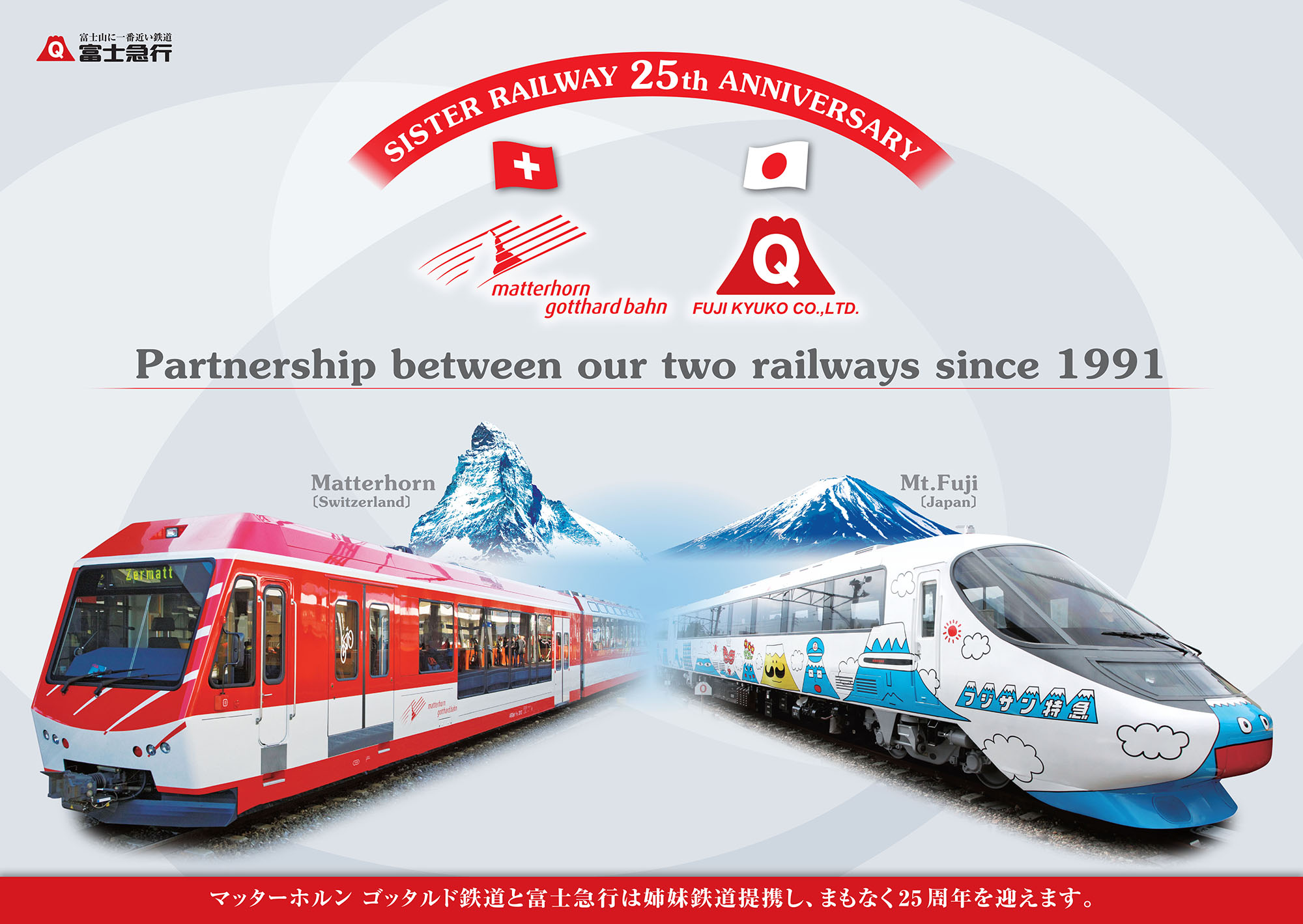
2016: the two companies celebrate the 25th anniversary of their partnership (©Fujikyuko)

September 2016: Visit of a MGB delegation in Fujikawaguchiko (©Fujikyuko)
A Swiss alpine adventure
The history of the MGB is a success story despite mountain steepness, wars, and financial cost. In 1930, the connection of two local railways, the BVZ (opened on July 3, 1891) and the Furka Oberalp Bahn (“FO”, inaugurated in 1926 after years of delays due to World War I), effectively constituted the first mountain railway network of the Matterhorn region, transporting passengers in the region between Zermatt and Disentis. This event also marked the birth of the world-famous Glacier Express: St. Moritz (via RhB) and Zermatt were linked together by a continuous track for the first time. Thanks to rising tourism and successive mergers, the MGB survived World War II and the rise of the automobile industry, progressively becoming a reference in the landscape of Swiss railways. To this day, it has remained a unique alpine adventure, stretching on a distance of 144 km, covering a difference in altitude of 3300 meters, passing through 33 tunnels and galleries, and crossing 126 bridges and viaducts en route. Every year, its 462 rail vehicles handles more than 2.5 million passengers and 100,000 tons of goods through 47 stations!

(©MGB)

(©MGB)
The variedness of the regions is fascinating: just like in a picture book, and almost romantic, the red narrow gauge train travels through a changing scenery of captivating natural beauty. The point of departure is Zermatt (1605 m. above sea level). From the village at the foot of the Matterhorn, the line leads through the Matter valley and then through the Rhone valley to Brig (670 m.). The journey continues through the picturesque Goms region into the Canton of Uri. On the Oberalp Pass, the railway reaches the highest point on the line (2033 m.). The end of the Matterhorn Gotthard Railway is in Disentis (1130 m.), with a direct connection to the RhB Rhaetian Railway. All these iconic locations can be experienced via the Grand Train Tour of Switzerland.
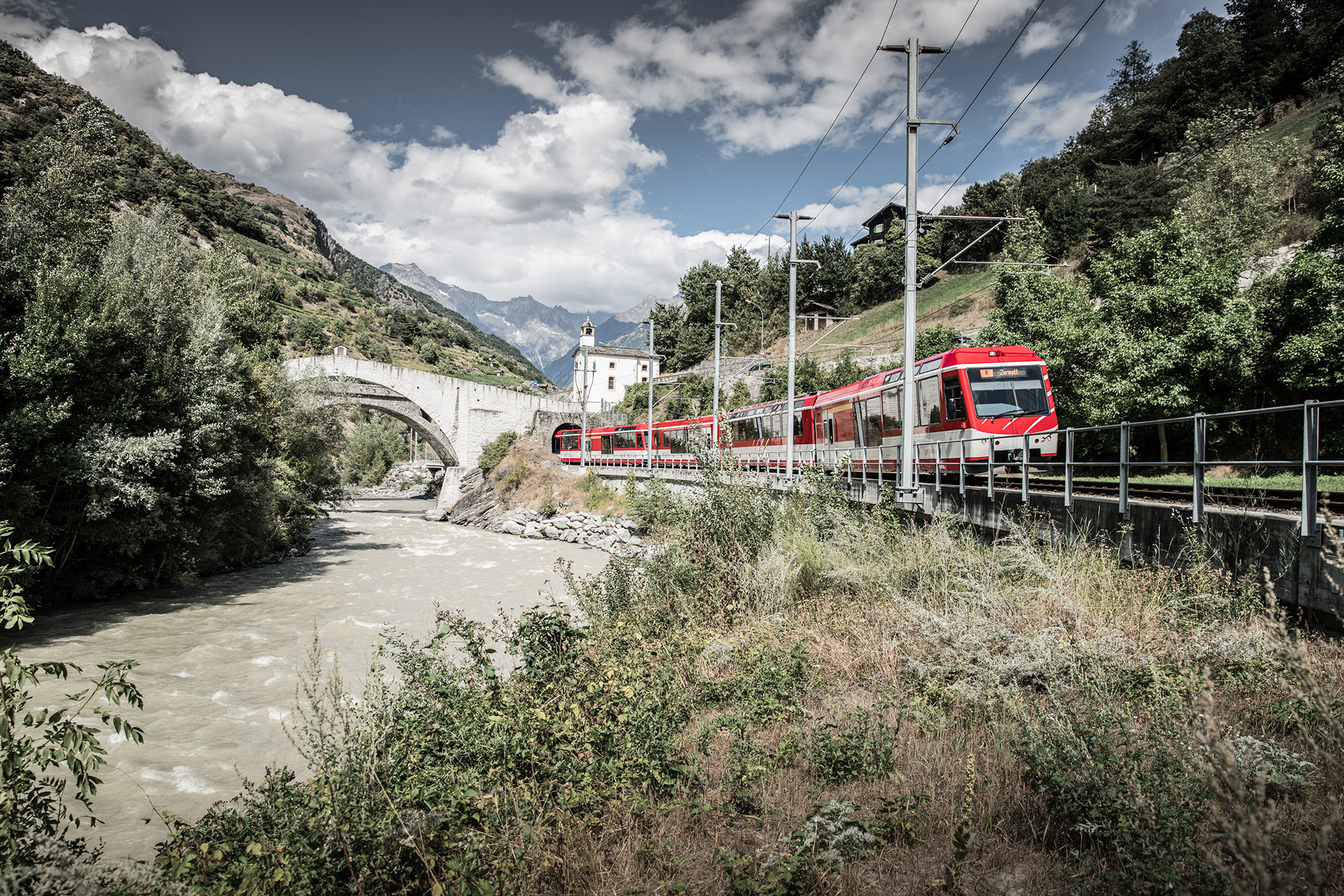
(©MGB)
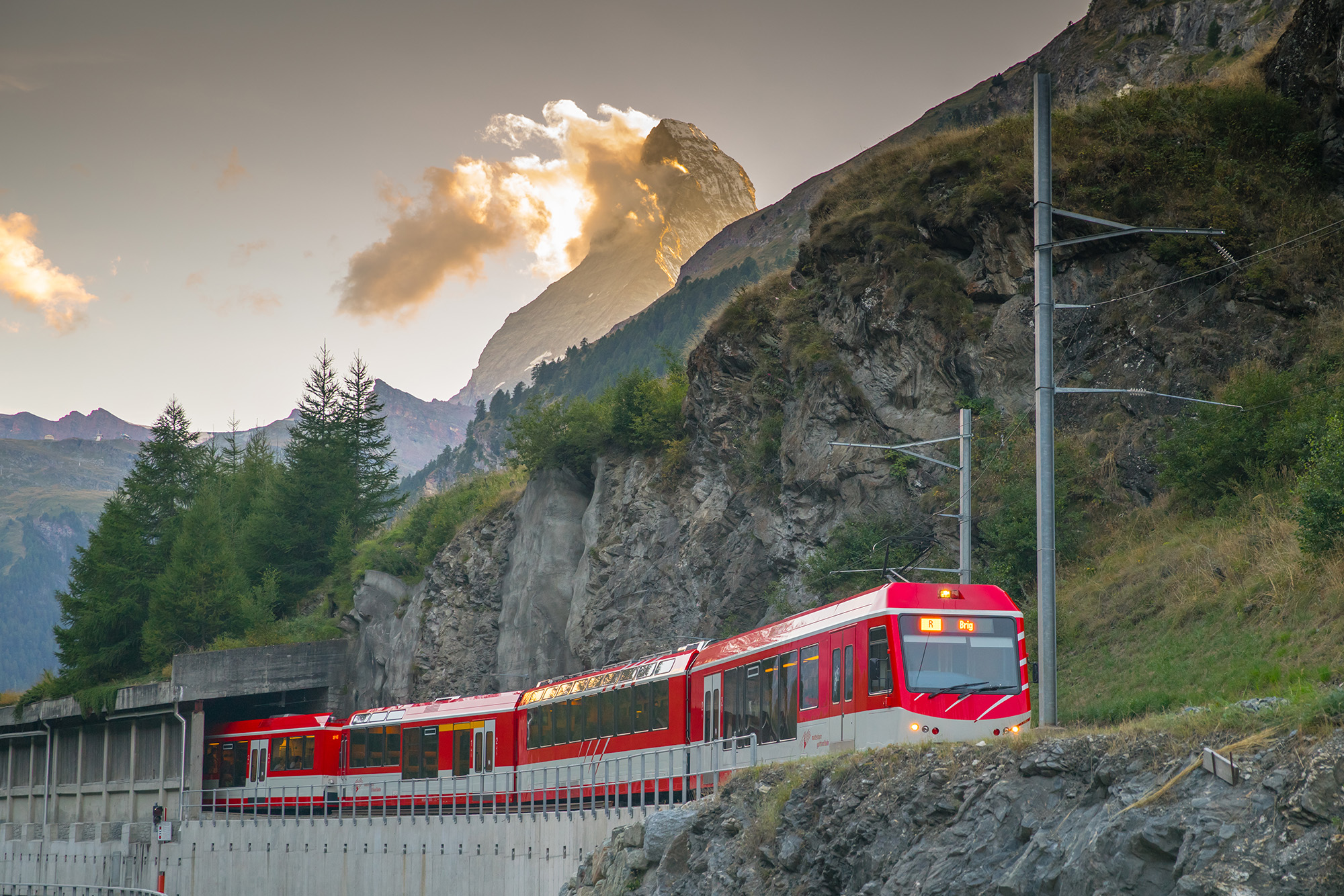
(©MGB)


